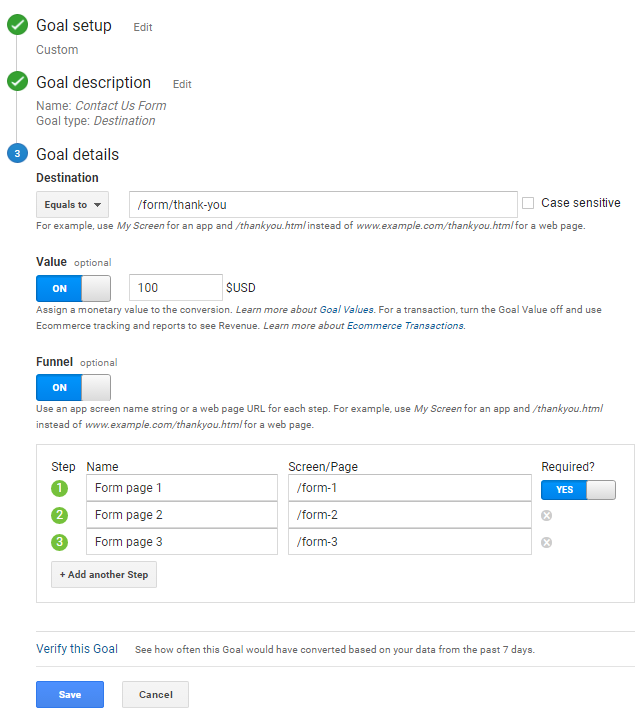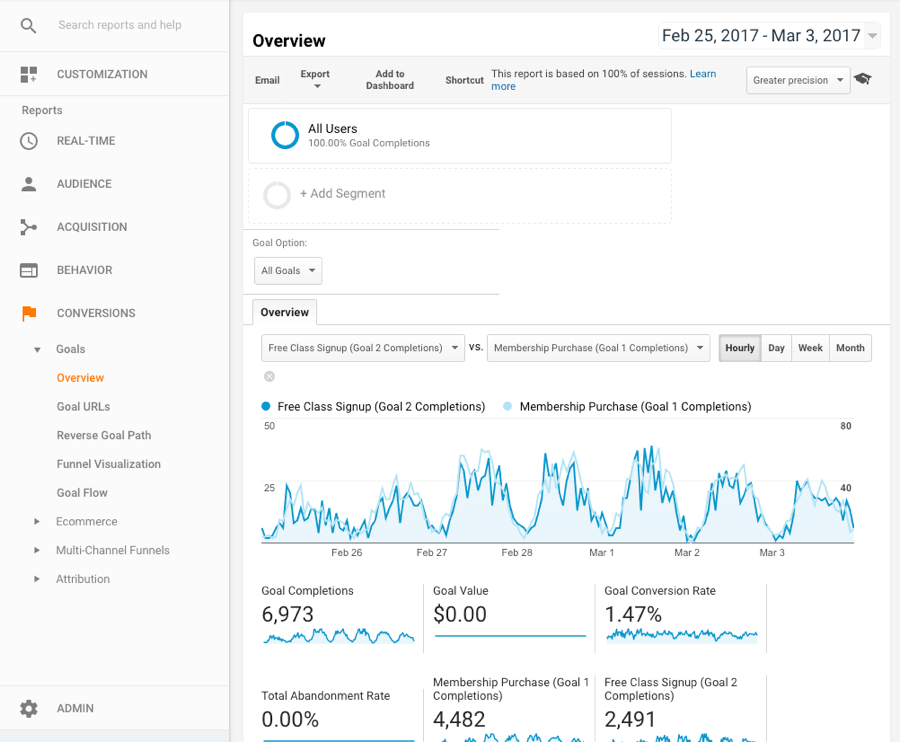Discover What Data Is Google Analytics Goals Unable to Track
Wiki Article
Introducing the Blind Destinations: Comprehending What Google Analytics Goals Can not Measure
In the world of digital analytics, Google Analytics stands as an effective tool for tracking and assessing online user interactions. Nonetheless, in the middle of its robust capacities, there exist dead spots that usually avert dimension. Recognizing what Google Analytics goals can not gauge is important for gaining a detailed sight of customer habits and involvement. As we delve right into the intricacies of these blind places, we uncover a complex internet of undiscovered regions that hold valuable understandings into user activities and motivations, difficult conventional wisdom and dropping light on the constraints of our data-driven understanding.User Actions on External Platforms
Comprehending exactly how users engage on external systems is essential for maximizing on the internet strategies. Exterior platforms, such as social media sites networks, referral internet sites, and on the internet discussion forums, play a considerable duty in driving web traffic to a firm's site. By examining individual actions on these platforms, services can obtain important understandings right into the effectiveness of their advertising and marketing efforts and the preferences of their target market.One trick facet of user habits on exterior platforms is the recommendation resource. By tracking where the customers are coming from, services can recognize which systems are driving the most traffic to their site. This info can help firms allot their resources better, concentrating on the platforms that produce the most effective outcomes.

Offline Communications and conversions
Assessing customer behavior on external systems offers valuable understandings into on the internet methods; nevertheless, considering offline conversions and interactions is equally essential for a thorough understanding of a business's general efficiency. Offline conversions, such as in-store purchases or phone questions, play a considerable duty in numerous organizations' success.
Attribution Beyond Last Click
When delving right into the world of electronic advertising and marketing analytics, it becomes necessary to look past the single touchpoint of the last click for a much more thorough understanding of attribution. While Google Analytics offers important understandings right into customer habits, relying solely on last-click attribution can be limiting - what data is google analytics goals unable to track. Attribution designs that go beyond the last click use a more nuanced view of the client journey, thinking about all the touchpoints that cause a conversionAcknowledgment past the last click enables marketing experts to appoint credit history to different interactions along the conversion course, giving a more clear picture of the performance of various marketing networks. By exploring multi-touch attribution designs such as linear, time decay, or position-based attribution, businesses can much better designate their marketing budgets and maximize their methods for optimal influence.
Comprehending the influence of each touchpoint in the conversion procedure is vital for making informed choices and making best use of ROI. By accepting attribution beyond click over here the last click, companies can gain much deeper insights right into customer habits and tailor their advertising efforts better.
Cross-Device and Cross-Browser Monitoring

Similarly, cross-browser tracking complements cross-device tracking by catching individual actions as they switch over in between different web browsers. Comprehending exactly how individuals engage with internet sites on numerous internet browsers can help marketing professionals maximize their on-line experiences to make certain uniformity and capability throughout various systems.
Qualitative Information and Customer Intent
Recognizing customer intent with qualitative information analysis is critical for creating targeted electronic marketing approaches that reverberate with the demands and choices of the target audience. Qualitative data provides understandings right into the 'why' behind customer activities, losing light on inspirations, emotions, and preferences that measurable information alone can not capture. By examining individual responses, remarks, and interactions, online marketers can reveal useful details concerning individual intent, enabling them to tailor their messaging, web content, and offerings to much better line up with what their audience is looking for.Qualitative information likewise helps in recognizing the context in which individuals engage with a website or app. This contextual understanding allows online marketers to create even more appropriate and customized experiences, inevitably driving greater involvement and conversion rates. By diving into customer intent with qualitative information analysis, organizations can gain a much deeper understanding of their target audience, bring about a lot more efficient advertising and marketing techniques that fulfill users' assumptions and needs.
Final Thought
Finally, Google Analytics goals have constraints in determining user actions on external systems, offline conversions, acknowledgment beyond last click, cross-browser and cross-device tracking, and qualitative information connected to individual intent. what anchor data is google analytics goals unable to track. It is essential for businesses to be familiar with these dead spots in order to supplement their information evaluation with other tools and approaches to gain a much more thorough understanding of their audience and improve their general electronic advertising and marketing techniquesBy evaluating individual behavior on these systems, businesses can acquire useful understandings right into the effectiveness of their advertising efforts and the choices of their target audience.
Assessing customer behavior on external platforms supplies beneficial understandings into online techniques; nevertheless, taking into consideration offline conversions and communications is just as vital for a thorough understanding of a firm's total efficiency.In electronic advertising and marketing analytics, relocating past last-click acknowledgment to explore cross-device and cross-browser tracking is important for acquiring an all natural understanding of customer interactions across various systems and devices. By analyzing user feedback, remarks, and communications, online marketers can reveal beneficial details regarding individual intent, allowing them to tailor their messaging, web content, and offerings to much better line up with what their audience is looking for.
By diving into user intent via qualitative information analysis, companies can gain a deeper understanding of their target audience, leading to more reliable advertising and marketing methods that satisfy users' demands and assumptions.
Report this wiki page